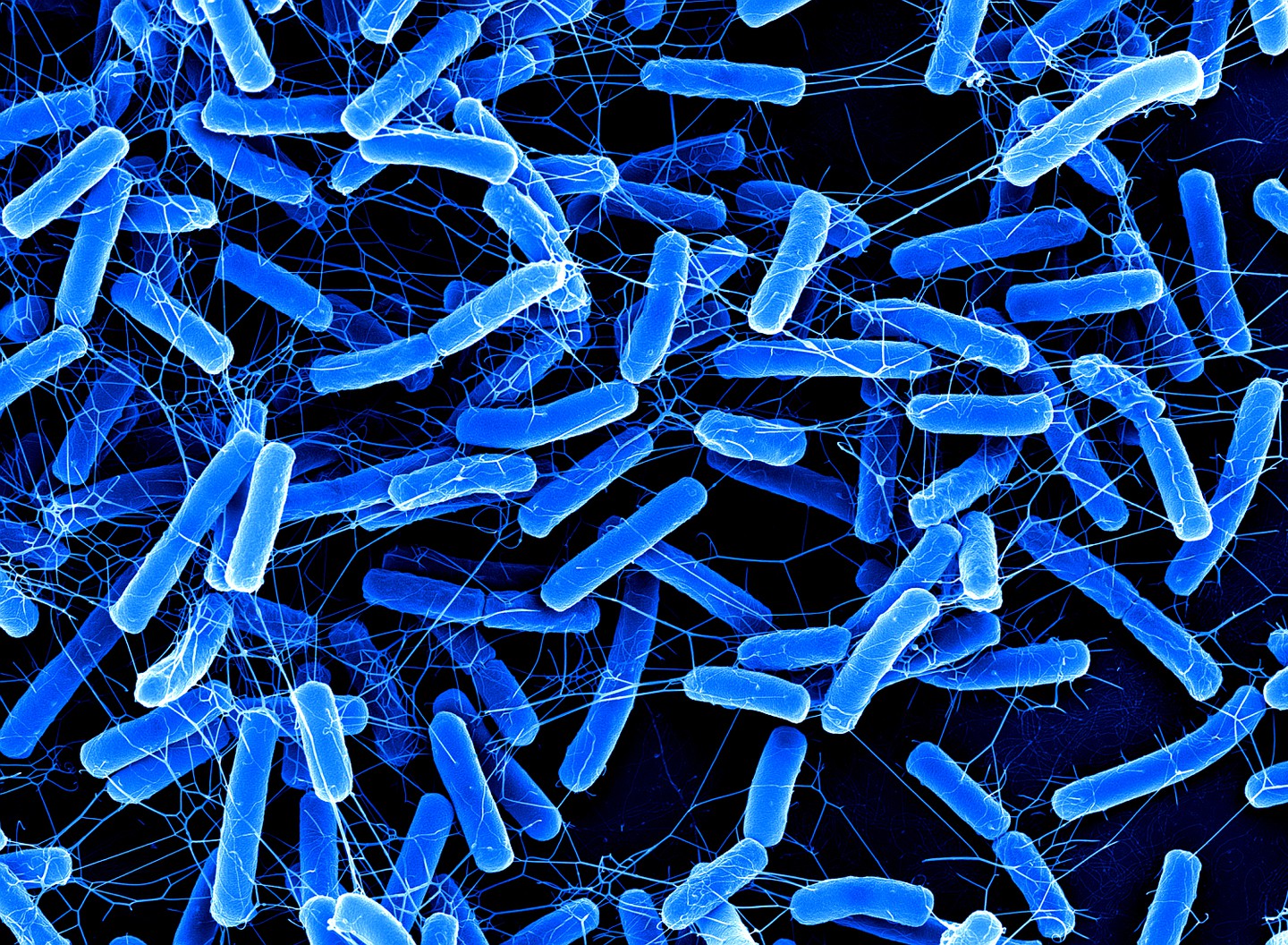Research Projects
Molecular Machines in Action
A fundamental property of many biological processes is that they are performed by highly organized, multicomponent macromolecular assemblies, often referred to as molecular machines. The Marlovits group studies the structural basis for assembly, regulation, and function of transmembrane molecular machines. We use a multidisciplinary approach, by combining molecular biology, genetic, cellular, biochemical, and a wide-range of structural (EM, X-ray, NMR, X-linking/mass spectrometry) tools. We are developing novel imaging and modeling technologies to visualize dynamic molecular processes in unprecedented detail in situ and in action.
Microbial Pathogenesis
Gram-negative pathogens such as Yersinia, Shigella, Pseudomonas, enteropathogenic/enterohemorrhagic E. coli (EPEC/EHEC) and Salmonella are the causative agents for many diseases known to both animals and humans. These pathogens often originate as foodborne diseases and result in outcomes ranging from a mild stomach ache to death. Central to the pathogenicity are bacterial toxins ('effectors'), which are delivered via the type III secretion system, a large membrane embedded machinery, from the bacterium to its host cell. Once delivered, these translocated effector proteins have the remarkable capacity to modulate various host-cell pathways that induce membrane ruffling and subsequently make the host accessible to bacterial infection.
Type III secretion system: Unfolded protein transport across membranes
Our recent structural analysis (Schraidt & Marlovits, Science 2010) of the injectisome, the most prominent, cylindrical structure of the type III secretion system, revealed a potential secretion path through the central part of the membrane embedded complex. However, the inner diameter of this path is too small to accommodate a fully folded effector protein, suggesting that either the injectisome must undergo large conformational changes during transport or the effector proteins need to be unfolded.
To investigate the type III secretion of human pathogens, we focused (1) on determining the secretion path of injectisomes, (2) on understanding the mechanism of transport, and (3) on visualizing protein transport in situ. We discovered that substrates are inserted into the secretion path in a polar fashion - N-terminal regions first – and that they are transported in an unfolded state. To understand, whether such a behaviour is in fact observed in situ, we analszed protein transport across membranes in a near-native state using cryo electron tomography (Radics et al 2014). For the first time, we were able to visualize pathogenic type III secretion systems in action.
Technology Development - Atomic structure determination from lower resolution cryo-EM maps
Direct electron detectors are key to the recent revolution in structural biology and have made it possible to generate electron density maps at near atomic resolution using cryo electron microscopy from non-crystalline sample material. However, building accurate models into these 3-5Å maps remains a challenge. We recently developed a new modeling approach that integrates Monte Carlo optimization with local density guided moves, Rosetta all-atom refinement, and real space B-factor fitting, thus yielding accurate models from experimental maps for three different systems with resolutions as low as 4.5Å (DiMaio et al Nature Methods 2015). Based on increasing need within the scientific community, we expanded this work by developing easy-to -use modeling tools which build accurate models at the highest possible resolution from single particle electron microscopy maps.
FUTURE PROJECTS AND GOALS
By understanding the molecular mechanism of TTSS-mediated protein transport at the highest possible resolution, we hope to provide a basis for the development of novel therapeutic strategies that will either inhibit its activity or modify the system for targeted drug delivery.
Header Image: Copyright HZI
Publications
Radics J, Königsmaier L, Marlovits TC (2014) Structure of a pathogenic type 3 secretion system in action. Nature Structural & Molecular Biology 21:82-7. doi:10.1038/nsmb.2722
- Highlighted as Cover in NSMB
Brunner MJ, Fronzes R.*, Marlovits TC* (2014). Envelope spanning secretion systems in Gram-negative bacteria. In: Bacterial Membranes: Structural and Molecular Biology Fronzes R. (eds)
2013
Simunovic M, Mim C, Marlovits TC, Resch G, Unger VM, Voth* GA (2013) Protein-mediated transformation of lipid vesicles into tubular networks. Biophys J 105(3):711-9 - Highlighted as Cover in Biophys J
2012
Fernandez-Rodriguez J, Marlovits TC* (2012) Induced heterdimerization and purification of two target proteins by a synthetic coiled-coil tag Protein Science 21(4):511-9 - Highlighted, Protein Science, 21, (2012)
Kosarewicz A, Königsmaier L, Marlovits TC* (2012) The blueprint of the Type-3 Injectisome. Phil Trans Royal Society B 367:1140-54
2011
Schraidt O, Marlovits TC* (2011) Three-dimensional model of Salmonella’s Needle Complex at Subnanometer Resolution. Science 331:1192-95
- Perspectives, Science, 331:1147-1148
- This week in Science: Science 331:1109
Khan AG, Pickl-Herk A, Gajdzik L, Marlovits TC, Fuchs R, Blaas D* (2011) Entry of a heparan sulphate-binding HRV8 variant strictly depends on dynamin but not on clathrin, caveolin, and flotillin. Virology 30;412(1):55-67
2010
Galkin VE, Schmied WH, Schraidt O, Marlovits TC*, Egelman EH* (2010) The structure of the Salmonella typhimurium type III secretion system needle shows divergence from the flagellar system. J Mol Biol. 396(5):1392-7
Khan AG, Pickl-Herk A, Gajdzik L, Marlovits TC, Fuchs R, Blaas D* (2010) Human rhinovirus 14 enters rhabdomyosarcoma cells expressing icam-1 by a clathrin-, caveolin-, and flotillin-independent pathway. J Virol. 84(8):3984-92
Marlovits TC*, Stebbins CE* (2010) Type III secretion systems shape up as they ship out. Curr Opin Microbiol. 13(1):47-52
Schraidt O, Lefebre MD, Brunner MJ, Schmied WH, Schmidt A, Radics J, Mechtler K, Galán JE, Marlovits TC* (2010) Topology and organization of the Salmonella typhimurium type III secretion needle complex components. PloS Pathog. 6(4):e1000824
Wagner S, Königsmaier L, Lara-Tejero M, Lefebre M, Marlovits TC*, Galán JE* (2010) Organization and coordinated assembly of the type III secretion export apparatus. Proc Natl Acad Sci U S A. 107(41):17745-50
2006
Marlovits TC, Kubori T, Lara-Tejero M, Thomas D, Unger VM, Galán JE* (2006) Assembly of the inner rod determines needle length in the type III secretion injectisome. Nature. 441(7093):637-40
2004
Marlovits TC, Kubori T, Sukhan A, Thomas DR, Galán JE, Unger VM* (2004) Structural insights into the assembly of the type III secretion needle complex. Science. 306(5698):1040-2 - This week in Science: Science 306:937)
2002
Marlovits TC, Haase W, Herrmann C, Aller SG, Unger VM* (2002) The membrane protein FeoB contains an intramolecular G protein essential for Fe(II) uptake in bacteria. Proc Natl Acad Sci U S A. 99(25):16243-8
- Editor’s choice in Science Signalling Sci. Is FeoB the Missing Link in GPCR Evolution?
2000
Ronacher B, Marlovits TC, Moser R, Blaas D* (2000) Expression and folding of human very-low-density lipoprotein receptor fragments: neutralization capacity toward human rhinovirus HRV2. Virology. 278(2):541-50
Hewat EA, Neumann E, Conway JF, Moser R, Ronacher B, Marlovits TC, Blaas D* (2000) The cellular receptor to human rhinovirus 2 binds around the 5-fold axis and not in the canyon: a structural view. EMBO J. 19(23):6317-25
1999
Verdaguer N, Marlovits TC, Bravo J, Stuart DI, Blaas D, Fita I* (1999) Crystallization and preliminary X-ray analysis of human rhinovirus serotype 2 (HRV2). Acta Crystallogr D Biol Crystallogr. 55(Pt 8):1459-61
1998
Hewat EA, Marlovits TC, Blaas D* (1998) Structure of a neutralizing antibody bound monovalently to human rhinovirus 2. J Virol. 72(5):4396-402
Marlovits TC, Abrahamsberg C, Blaas D* (1998) Very-low-density lipoprotein receptor fragment shed from HeLa cells inhibits human rhinovirus infection. J Virol. 72(12):10246-50
Marlovits TC, Abrahamsberg C, Blaas D* (1998) Soluble LDL minireceptors. Minimal structure requirements for recognition of minor group human rhinovirus. J Biol Chem. 273(50):33835-40
Marlovits TC, Zechmeister T, Gruenberger M, Ronacher B, Schwihla H, Blaas D* (1998) Recombinant soluble low density lipoprotein receptor fragment inhibits minor group rhinovirus infection in vitro. FASEB J. 12(9):695-703
Marlovits TC, Zechmeister T, Schwihla H, Ronacher B, Blaas D* (1998) Recombinant soluble low-density lipoprotein receptor fragment inhibits common cold infection. J Mol Recognit. 11(1-6):49-51
1995
Ayasse M*, Marlovits T, Tengö J, Taghizadeh T, Francke W (1995) Are there pheromonal dominance signals in the bumblebee Bombus hypnorum L. (Hymenoptera, Apidae). Apidologie. 26:163-180








